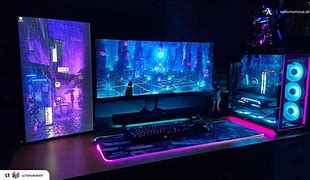How To Choose The Best PC Gaming Setup For Under $1000
Building a powerful PC gaming setup for under $1000 might seem like an impossible feat, but with a little planning and know-how, it’s entirely achievable. You can create a system that delivers a thrilling gaming experience without breaking the bank. This guide will walk you through the process, from setting a budget to choosing the right components, and ultimately, building your very own gaming rig.
Setting Your Budget: Navigating the $1000 Threshold
The first step in your journey to a budget PC gaming setup is to set a firm budget. While $1000 seems like a decent starting point, it’s important to be realistic about your spending. You’ll need to allocate funds for each of the key components: CPU, GPU, RAM, storage, motherboard, power supply, and peripherals. Remember, you can often find deals and discounts on components, so be sure to shop around.
Prioritizing Performance: Which Components Matter Most?
Not all PC components are created equal when it comes to gaming performance. You’ll need to prioritize components that will have the biggest impact on your gaming experience. Here’s a general order of importance for a budget gaming PC:
1. Graphics Card (GPU): The GPU is responsible for rendering the visuals in your games, so it’s the most important component for smooth gameplay. Aim for a mid-range GPU that can handle your desired games at decent settings.
2. Processor (CPU): The CPU powers all of your computer’s operations, including game processing. A strong CPU ensures smooth gameplay, especially in demanding games. A mid-range CPU will be sufficient for a budget build.
3. RAM: RAM is your computer’s short-term memory, and it’s essential for smooth multitasking and loading games. For a budget build, 8GB of RAM is a good starting point.
4. Storage: Your storage drive houses your operating system, games, and other files. Choose a fast SSD for your main operating system and games, and you can opt for a larger HDD for additional storage.
5. Motherboard: The motherboard is the foundation of your PC, connecting all of your components. Choose a motherboard with the right features and slots to support your components.
6. Power Supply (PSU): The PSU provides power to your entire system. Select a PSU with enough wattage to support all of your components.
CPU Showdown: Intel vs. AMD for Budget Gaming
The choice between Intel and AMD for your budget gaming setup isn’t easy. Both companies offer strong CPU options for budget builds, and both have their pros and cons. Intel’s CPUs are generally known for higher clock speeds, but AMD’s Ryzen CPUs have offered better value in recent years, with excellent performance for the price.
Here’s a quick breakdown:
- Intel: Excellent single-core performance, good for demanding games, but tends to be more expensive.
- AMD: Excellent multi-core performance, good for multitasking and future-proofing, generally more budget-friendly.
Consider your budget and the specific games you plan to play when deciding between Intel and AMD.
GPU Power: Finding the Right Graphics Card for Your Needs
The GPU is arguably the most important component for your budget gaming setup. You need a GPU that can handle your desired games at decent settings. Here’s a breakdown of how GPUs are categorized:
- Low-End: Good for casual gaming at lower settings, but may struggle with demanding titles.
- Mid-Range: A great sweet spot for budget gamers, capable of handling most modern games at good settings.
- High-End: Exceptional performance for ultra-high settings and demanding games, but often come with a premium price.
For a budget build, you’ll want to target a mid-range GPU. Popular budget-friendly options include the NVIDIA GeForce GTX 1650 and the AMD Radeon RX 6500 XT.
RAM & Storage: Balancing Speed and Capacity on a Budget
RAM and storage are crucial for your gaming experience. Here’s a breakdown of the key considerations for budget builds:
- RAM: The amount of RAM you need depends on the games you play and your multitasking habits. 8GB is a good starting point for most gamers.
- Storage: For your main operating system and games, an SSD will significantly improve loading times and overall system responsiveness. You can opt for a larger HDD for additional storage, as they are generally more affordable per GB.
Motherboard Essentials: Choosing the Right Foundation
The motherboard is the foundation of your PC, so it’s important to choose one that’s compatible with your other components. Look for a motherboard that:
- Supports your CPU: Ensure the motherboard supports the specific CPU you’ve chosen.
- Has enough slots: Ensure the motherboard has enough expansion slots for your RAM, storage drives, and other peripherals.
- Features you need: Consider features like built-in Wi-Fi, Bluetooth, and RGB lighting.
Powering Up: Selecting the Right PSU for Your Build
The power supply unit (PSU) provides power to all of your components. You’ll need a PSU with enough wattage to support all of your hardware. A good rule of thumb is to choose a PSU with 100-200 watts more power than the recommended wattage for your components. Also, look for a PSU with an 80 Plus certification, which ensures efficiency and reliability.
Essential Peripherals: Monitors, Keyboards, Mice, and More
Once you’ve built your PC, you’ll need to get some essential peripherals to complete your setup.
- Monitor: The monitor is your window into the gaming world, so invest in a good one with a fast refresh rate and a high resolution.
- Keyboard and Mouse: A comfortable and responsive keyboard and mouse are essential for gaming. Choose a keyboard with mechanical switches for a tactile feel and a mouse with a high DPI for precise control.
- Headset: A good headset is important for communicating with teammates and immersing yourself in the game.
Building Your Dream PC: A Step-by-Step Guide
Once you’ve gathered all of your components, it’s time to build your PC! This might seem daunting at first, but it’s not as hard as you think.
1. Choose a workspace: Find a clean and organized area with good lighting.
2. Connect the components: Carefully follow the instructions and diagrams provided with your motherboard.
3. Install the operating system: Once your PC is assembled, you’ll need to install an operating system.
4. Install drivers: Install the drivers for your GPU, motherboard, and other components.
5. Test your system: Once you’ve installed everything, power up your system and test it to ensure everything is working properly.
Finding Deals and Saving Money: The Ultimate Budget Gamer's Guide
Finding deals on PC components is essential for a budget gaming setup.
1. Shop around: Compare prices from multiple retailers, including online stores and local shops.
2. Look for sales and discounts: Many retailers offer sales throughout the year.
3. Consider pre-built PCs: Pre-built PCs can be a good option for budget gamers, as they often come with discounts and bundled components.
Conclusion
Building a powerful PC gaming setup under $1000 is a great way to enjoy all the latest games without breaking the bank. By prioritizing key components, researching your options, and taking advantage of deals and discounts, you can build a system that’s powerful enough to deliver an amazing gaming experience.
Frequently Asked Questions (FAQs)
Q: What are the best graphics cards for a $1000 budget?
A: The best graphics cards for a $1000 budget typically include NVIDIA GeForce GTX 1650 and AMD Radeon RX 6500 XT.
Q: Can I build a PC for under $1000 with a good CPU?
A: Absolutely! You can find powerful CPUs from Intel or AMD within your budget.
Q: What are the best budget monitors for gaming?
A: Look for monitors with a fast refresh rate (144Hz or higher) and a high resolution (1080p or 1440p) for a smooth and immersive gaming experience.
Q: What are the best budget gaming keyboards and mice?
A: Popular budget-friendly options include the Logitech G213 Prodigy keyboard and the Razer Viper Mini mouse.
Q: What are the best ways to find deals on PC components?
A: Check online retailers like Newegg, Amazon, and Best Buy for sales and promotions. You can also look for local computer shops that offer deals on refurbished or used parts.

